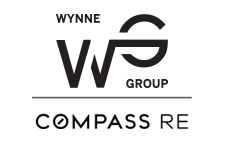Let’s face it nobody likes to pay taxes. What if I told you there was a way to get out of paying capital gains tax when selling an investment property? What if I told you that it is a simple loophole offered to property investors by the IRS itself? It’s possible with the 1031 Exchange.
Now that I have your attention, I will go over the rules and requirements of this extremely valuable 1031 tax-deferred exchange exclusively for investors.
What is a 1031 Exchange?
The 1031 Exchange is a way to defer capital gains tax when an investor decides to sell an investment property and buy a new one in its place. Essentially, it is exchanging investment properties of equal or greater value while getting out of paying taxes.
The IRS code explains: “No gain or loss shall be recognized on the exchange of property held for productive use in a trade or business or for investment, if such property is exchanged solely for property of like kind, which is to be held either for productive use in a trade or business or for investment.”
Rules and Requirements
Nobody said that this was a simple process. There are some rules and requirements the IRS put in place for investors who are interested in taking part of the 1031 Exchange.
Must Be Like-Kind Investment Properties
Unfortunately, this tax deference does not qualify for primary residential properties. It only applies to like-kind investment and business properties.
Like-kind properties do not need to be properties that are the same. That means you can sell an apartment building and buy an office building. Like-kind refers to the properties being used in the same way, as investments.
45-Day Identifying Period
Once you have sold your first investment property, you have 45 days to identify the property you will be buying next. If you think about it, this isn’t much time to search. I recommend looking for properties while yours is already on the market or in the process of going to settlement.
180-Day Purchase Period
Now that you have identified your new investment property, you have 180 days to go to settlement.
To be clear, this is 180 days from when you sold your property not 180 days from when you identify your new property.
Must Be of Greater or Equal Value
It would be pretty sweet if you found a property that was less expensive than the one you sold, leaving you some tax-free money to play around with. Unfortunately, with the 1031 Exchange, the new property must be of greater or equal value. That means all of the equity and debt from your first property must at least be equal to the new property.
If you do find a great investment property and it happens to be less, you can do a partial exchange. However, you will have to pay taxes on the difference, which is referred to as “boot.”
A Qualified Intermediary Must be Used
Unlike regular real estate transactions, the 1031 Exchange requires a qualified intermediary to hold on to the sale proceeds during the process of finding a new property. This cannot be your broker, real estate agent, friend or family member. It’s an independent third party who will prepare the tax documents for the exchange.
The Titles Must Be Mirrored
The names of the owners must be the same on both Titles. Let’s say you and your wife were both named the owners on the investment property you just sold. That means that the Title of the new property must also state that you and your wife are the owners. The same goes for businesses and corporations.
Be A Smart Investor
There is a ton of information out there about real estate transactions and how people can be smarter investors. You just have to do your research and talk to real estate professionals.
That’s where Philadelphia’s leading real estate agent, Agent Lady, comes in. Investors flock to Philadelphia to take advantage of low property taxes and development opportunities. So, why not let Agent Lady guide you through a 1031 Exchange for your next investment property purchase?





